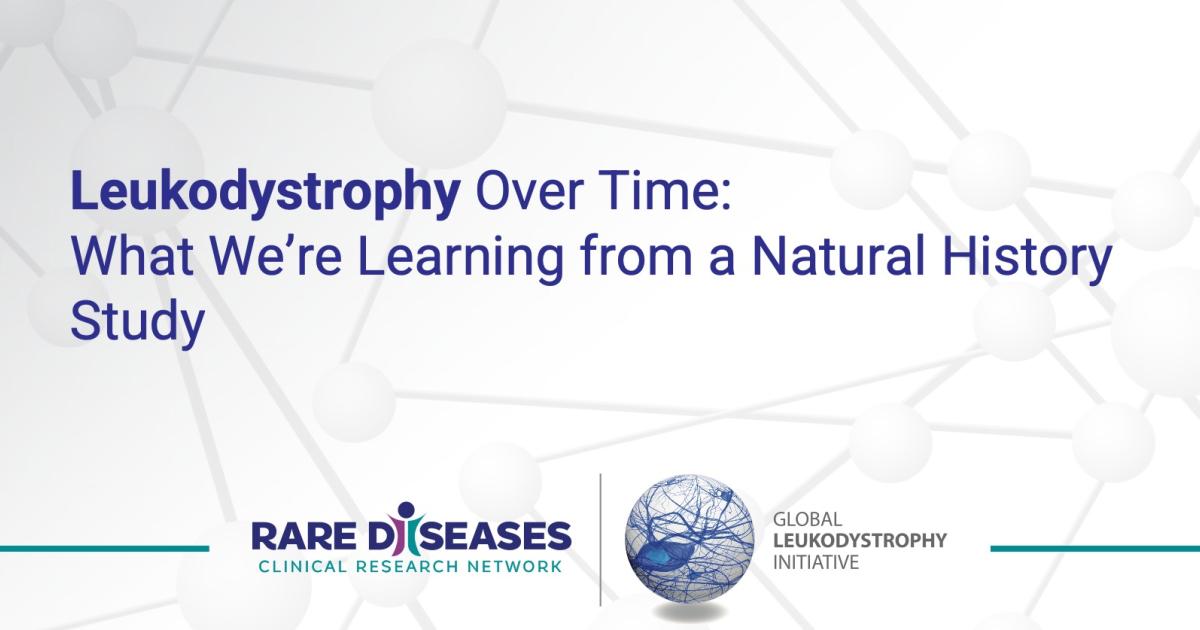Leukodystrophies are a complex, often progressive group of disorders affecting the white matter of the brain due to the loss or absence of myelin, the lipid membrane that insulates axons in the central nervous system. The most common symptom is a decline in functioning of an infant or child who previously appeared healthy. Other symptoms include issues in body tone, movements, gait, speech, ability to eat, vision, hearing, and behavior.
To learn more about the natural history of leukodystrophy, the Global Leukodystrophy Initiative Clinical Trials Network (GLIA-CTN) is conducting a study, “GLIA-CTN EHR Data Extraction Project.” The team is using an automated process to query electronic health record (EHR) and Pediatric Health Information System (PHIS) data across a network of participating institutions to develop a large-scale library of clinical natural history data for individuals with a confirmed diagnosis of leukodystrophy.
Here, Russell D’Aiello, MS, Data Integration Analyst; Robert Grundmeier, MD, Section Chief of Informatics; and fellow members of the Biomedical Informatics and Statistical Core at the Children’s Hospital of Philadelphia share more about the study.
What are we learning about leukodystrophy from this study?
By using an agnostic approach to capturing medical events, we were able to expand our knowledge of how individual leukodystrophies impact our patients. It is already well-understood that leukodystrophy families experience an extraordinary burden of medical care, and this study emphasized the systemic comorbidities associated with these disorders.
We also learned that while there are some differences between individual leukodystrophies, grouping patients with discrete diagnoses by neurologic skills yields many shared features. This supports the concept of centralized centers of knowledge, where we can leverage shared experiences and science to support families affected by ultra-rare disorders.
What makes this study unique?
This study is notable in that it was built “from the ground up” within the collaborative network of GLIA-CTN centers, resulting in a cohort size that is, frankly, unprecedented for the leukodystrophies, allowing the study investigators to compare the rates of events by neurologic status across the leukodystrophies.
The study design is also unique in that it uses novel automated tools such as structured query language (SQL) and natural language processing (NLP) algorithms to seamlessly extract relevant data elements from the medical records of thousands of affected individuals. Recognizing that this is a novel approach, validation is achieved by having a portion of each site’s charts manually reviewed by trained medical experts.
How will this study contribute to clinical trial readiness?
Effective clinical trial design demands a robust understanding of the comorbidities associated with each leukodystrophy of interest, which has historically been difficult to achieve within limited patient cohorts. This study has allowed investigators to study these comorbidities at a scale not previously achievable, yielding new insights that will almost certainly inform the design and safety of future clinical trials in the leukodystrophies.
What are the successes and challenges of this study?
Rare disease diagnoses are oftentimes nuanced and excluded from standardized classification systems (e.g., ICD-10-CM) that typically serve as a basis for large-scale data automation. To capture representative cohorts, GLIA-CTN biomedical informatics experts were required to dive deeper—building algorithms that would scan relevant medical records for specific keywords indicative of various leukodystrophy diagnoses—and devoted hundreds of additional hours to manually verifying matches to assess the accuracy of those algorithms.
Despite these challenges, automation of these processes ultimately proved to be useful in identifying cohorts that were previously inaccessible to more traditional cohort studies. A notable success of the study was the ease with which it could be expanded across the network. With most sites using Epic to manage electronic medical records, queries could be easily developed and shared between informatics experts throughout the network to promote a uniform approach to collection of standardized data elements.
How will this study impact patients, now or in the future?
Automated approaches will help us to capture rare disease features and events at a scale that would have been otherwise infeasible, which promises to yield exciting new insights to inform not only clinical trial design, but also our basic knowledge of the natural history of these disorders and, as a result, our ability to improve our clinical management approaches.
“GLIA-CTN EHR Data Extraction Project” is currently recruiting. Learn more about the study and how to join.
The Global Leukodystrophy Initiative Clinical Trials Network (GLIA-CTN) is part of the Rare Diseases Clinical Research Network (RDCRN), which is funded by the National Institutes of Health (NIH) and led by the National Center for Advancing Translational Sciences (NCATS) through its Division of Rare Diseases Research Innovation (DRDI). GLIA-CTN is funded under grant number U54NS115052 as a collaboration between NCATS and the National Institute of Neurological Disorders and Stroke (NINDS).






